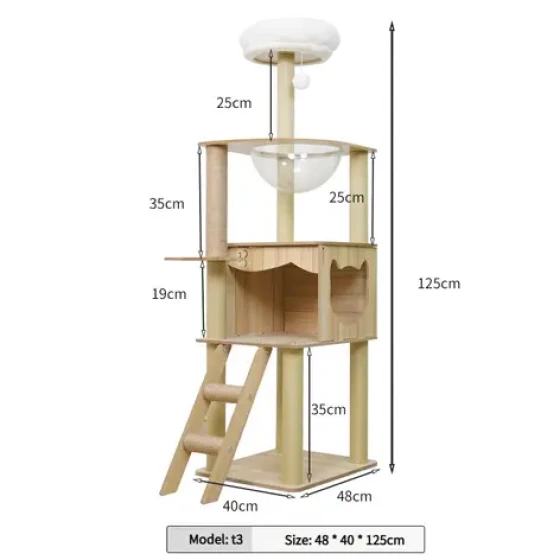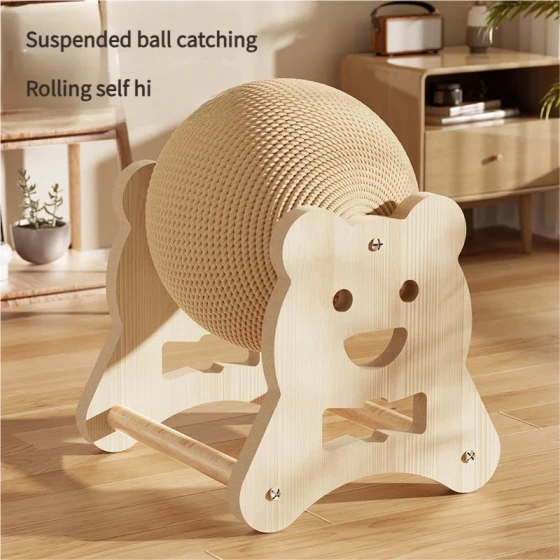Cat Hissing at Owner_Why Cats Suddenly Attack Their Owners
Cats hissing at their owners or suddenly attacking them is their way of conveying messages through body language and sounds. It usually expresses fear, discomfort, stress, pain, territorial awareness, or play needs. Understanding the reasons behind these behaviors and responding appropriately is key to building a harmonious human-cat relationship.
A cat's “hissing” is like them saying “Stay away from me!” or “I'm really upset right now!” It is a warning signal, a defensive mechanism when the cat feels uneasy, scared, or threatened. Sudden attacks may be an escalated response when such warnings are ignored or arise from more complex reasons.
Cat Hissing: A Warning Signal

The hissing sound (Hissing) of cats resembles a snake’s hiss and is usually accompanied by other physical signals, such as ears flattened backward, dilated pupils, raised fur (piloerection), or airplane ears. This is an instinctive, defensive sound aimed to make the other party (whether other animals or humans) back off and avoid potential conflict. If your cat hisses at you, it is usually telling you it feels discomfort or threat.
There are many reasons that cause a cat to hiss at its owner, commonly including:
- Feeling scared or threatened: Cats may feel scared or nervous about new environments, strangers, or sounds. For example, a newly arrived cat might hiss due to unfamiliar surroundings. Sudden loud noises (like a vacuum cleaner turning on) or unexpected actions can also frighten cats.
- Discomfort or pain: If a cat feels pain or discomfort in any body part, it may hiss when that area is touched as a warning. This could indicate illness or injury, such as arthritis or toothache. If the cat frequently hisses accompanied by signs like loss of appetite or lethargy, prompt veterinary examination is necessary.
- Protecting offspring: Mother cats are very protective during nursing periods and may hiss to deter anyone approaching their kittens.
- Guarding food or valuable items: Some cats are very possessive of their food or favorite toys and may hiss at anyone trying to get close or take these, as a resource protection instinct.
- Dislike of being touched or held: Certain cats do not like being touched in specific spots or being picked up. When their tolerance is exceeded, they hiss to signal “stop”. Overstimulation from petting can also cause discomfort or overexcitement, leading to hissing or even attacks.
- Sensitivity to smells: Cats have a very keen sense of smell. If you carry a scent they do not recognize or dislike (like other cats or dogs), this can trigger alertness and hissing.
- Asserting dominance or expressing displeasure: In some cases, cats hiss at owners to challenge their dominance or express dissatisfaction with certain matters.
Sudden Cat Attacks on Owners: Complex and Diverse Reasons
Sudden cat attacks on owners can be confusing and painful. These aggressive behaviors result from multiple factors and require careful observation and analysis.
Common reasons for cats suddenly attacking owners include:
- Play aggression: Especially kittens or energetic young cats might chase, pounce, bite, and scratch the owner’s hands or feet as “prey.” This usually occurs when they have not learned to control their play or lack proper toys to satisfy hunting instincts. If owners used hands or feet as toys when cats were young, this behavior may be reinforced.
- Petting-induced aggression: Some cats enjoy petting initially but abruptly switch to attacking. This may result from prolonged petting causing overexcitement or irritation, or touching areas they dislike. Sometimes static electricity generated by petting can also cause discomfort and attacks.
- Defensive or fear-driven aggression: When cats feel scared, cornered, or threatened without escape, they may attack in self-defense. For example, being trapped in a corner or extreme unease about a situation. Cats with prior unpleasant experiences (such as abuse) may respond defensively even to certain owner actions. Repeated defensive attacks may evolve into proactive aggressiveness.
- Redirected aggression: When cats feel anger or agitation from a stimulus they cannot reach (like seeing a stray cat outside or hearing loud noises), they may redirect attacks toward nearby people or animals. These attacks are often sudden and unpredictable, posing danger.
- Pain or illness: Underlying health issues are important causes of sudden behavioral changes including aggression. Toothache, arthritis, hyperthyroidism, neurological disorders, or rare diseases (like “rage syndrome”) can lead cats to attack due to pain or discomfort. If attacks appear suddenly, veterinary consultation should be the first step to rule out medical issues.
- Insufficient socialization or negative experiences: Kittens lacking adequate human or feline contact during critical socialization periods (usually weeks to months after birth) may grow fearful and uneasy around people or other cats, increasing likelihood of aggression. Improper interaction methods (like punishment or intimidation) also exacerbate defensive attacks.
- Stress from environmental changes: Cats are habitual animals; changes (moving home, new family members or pets) can cause stress and anxiety, leading to attacks. In multi-cat households, resource competition (food, litter boxes, territory) may cause conflicts that affect owners as well.
- Seeking attention: Some cats resort to extreme behaviors, including attacks, to get owner attention, often due to boredom, loneliness, or lack of interaction.
How to Respond to Cat Hissing and Attack Behaviors
The owner’s handling of cat hissing and attacks is critically important. Remember, punishment or intimidation usually backfires, increasing fear and aggression.
Here are some suggested responses:
- Recognize and respect cat signals: Learning cat body language is essential. When cats show hissing, airplane ears, dilated pupils, or tail twitching, they likely feel uncomfortable and need space. Immediately stop what you are doing and give the cat personal space; never force contact.
- Stay calm; never punish: Hissing and attacks express emotions, not deliberate “bad” behavior. Yelling or physical punishment only makes cats more fearful or aggressive. Stay calm and slowly back away, letting the cat calm down.
- Rule out health issues: If a cat suddenly becomes aggressive, especially a previously gentle one, promptly visit a vet to exclude illness or pain causes.
- Analyze behavior patterns and identify triggers: Observe when hissing or attacks occur—during petting, meal times, around strangers or other animals. Identifying triggers helps in applying targeted measures.
- Provide security and enriched environment: Offer a safe, comfortable living space with ample food, clean litter boxes, hiding spots (like cat beds or boxes), and elevated areas. An enriched environment (cat trees, toys, window perches) satisfies hunting and exploration instincts, relieving stress and boredom.
- Proper play methods: Use interactive toys like wand teasers instead of hands or feet to play. This satisfies hunting needs and prevents cats from associating your limbs with “prey.” Regular scheduled play sessions (15-30 minutes daily) help expend energy and reduce boredom-induced aggression.
- Gradual socialization and desensitization: For fear of strangers, new environments, or other animals, use step-by-step approaches. Scent swapping, gradual exposure, and rewarding positive behavior (with treats) help cats adapt and build positive associations.
- For petting-induced attacks: Learn to recognize “stop” signals during petting (tail twitching, ear movement, body stiffening). Cease petting immediately when these signs appear. Try shorter petting sessions or limit to cat-preferred areas.
- Seek professional help: If aggression is severe and persistent, and you feel helpless, consulting a pet behaviorist or veterinarian is important. They can assess your cat’s situation, create personalized behavior modification plans, and sometimes recommend medication support.
Common Questions
- Does my cat hate me when it hisses at me? Not necessarily. Cats usually hiss to express fear, unease, or discomfort as a defensive warning, not dislike. Understanding the cat’s context and body language helps judge the real cause.
- What should I do if my cat suddenly bites me? Stay calm and do not punish. If bitten, avoid quickly pulling your hand back to prevent further injury. Slowly remove your hand from the cat’s mouth or use an object (like a pillow) to separate you. Clean and disinfect wounds promptly. Seek medical care if wounds are deep or bleeding heavily.
- How to prevent cats from scratching or biting furniture? Provide ample scratching posts or cat trees, sprinkle catnip to attract use, and trim your cat’s nails regularly to minimize damage.
- A new cat arrives home; what if the resident cat hisses? This is territorial behavior. Introduce gradually: separate initially to get familiar with each other’s scents, then limited supervised contact, rewarding positive interaction. Ensure each cat has separate food bowls, water, litter boxes, and resting spots to avoid resource conflict.
In summary, cat hissing and aggressive behaviors are their unique communication modes. As responsible pet owners, we must patiently observe, understand, and respond correctly to these signals, discover the true underlying reasons, and help cats overcome fear and unease to build a harmonious, trusting human-cat relationship. If situations are complex or persistent, seek professional pet behavior advice or veterinary help promptly.



